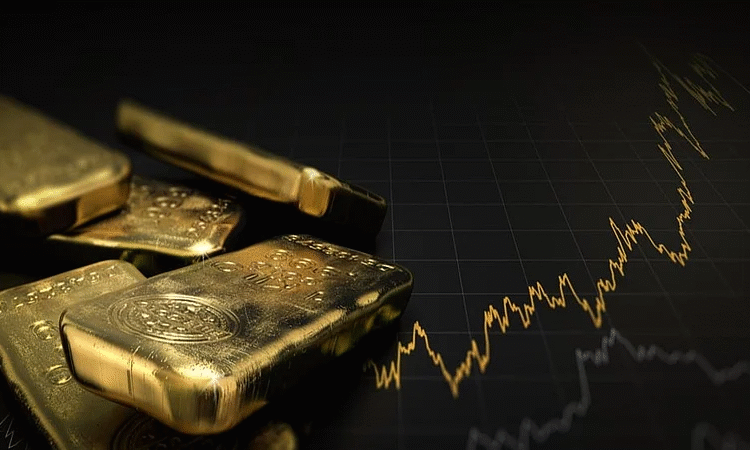Gold has long been a symbol of wealth, security, and economic stability across the globe. As one of the most coveted precious metals, its value intrigues investors, governments, and consumers alike. The price of gold per ounce often fluctuates due to a variety of factors. Understanding how the global and Indian markets determine this price provides insight for those utilizing tools such as the gold price today calculator and investing in this timeless asset.
This article delves into the mechanisms behind gold’s valuation and the specific nuances that influence its pricing in global and Indian markets.
Global Factors Affecting Gold Price Per Ounce
On the global stage, gold is traded as a commodity and serves as a foundation for central banks, financial institutions, and investors. Several factors influence its price per ounce worldwide:
1. Demand and Supply Dynamics
The most fundamental factor driving the gold price per ounce is the interplay between demand and supply. Globally, gold is demanded for various purposes, including jewelry manufacturing, investment, electronics, and even dentistry. On the supply side, gold comes from mining operations, secondary recovery (recycled gold), and government reserves.
If demand exceeds supply, gold prices rise, whereas if supply outpaces demand, prices tend to fall. Countries such as China and India significantly influence global demand due to their cultural and economic attachment to gold, particularly for weddings and festive occasions.
2. Inflation and Currency Strength
Gold is often referred to as a hedge against inflation. When the purchasing power of fiat currencies declines, investors turn to gold to preserve value. The price of gold per ounce increases during periods of high inflation or when major currencies like the U.S. dollar weaken.
Historically, the U.S. dollar has had an inverse relationship with gold prices. As the dollar strengthens, gold prices tend to drop, and vice versa.
3. Geopolitical Tensions
Gold is considered a “safe haven asset” during times of geopolitical turmoil or financial uncertainty. When events such as wars, economic sanctions, or political unrest occur, investors retreat to gold, driving up the price per ounce. The stability of gold makes it appealing under these circumstances, serving as an anchor in turbulent times.
4. Global Monetary Policies and Interest Rates
Central banks play a critical role in shaping the gold price per ounce by adjusting monetary policies such as interest rates or quantitative easing. Lower interest rates often result in higher gold prices as returns on fixed-income securities diminish, prompting investors to seek alternatives like gold.
The actions of prominent central banks such as the Federal Reserve in the U.S., the European Central Bank, and the Reserve Bank of India (RBI) indirectly influence global gold prices. Decisions to sell, buy, or increase gold reserves also impact pricing.
5. Stock Market Performance
Gold often contrasts with equities in terms of investor behavior. When stock markets perform poorly, investors frequently turn to gold as a safer alternative. This divergence means that when global stocks falter, the gold price per ounce typically increases.
6. Trading Speeches and Gold Spot Price
On the global level, gold trading is influenced by the live spot price, which is essentially the price of gold at any given moment. This price constantly fluctuates as gold is traded 24 hours a day on markets such as the New York Mercantile Exchange (NYMEX), London Metal Exchange (LME), and various Asian exchanges. Factors such as global news, data releases, and trading behavior on these platforms drive the spot price changes, impacting gold’s per-ounce price.
Indian Market Dynamics: How Is Gold Price Per Ounce Determined Locally?
India has a centuries-old love affair with gold, where the metal is culturally and economically significant. The Indian gold market operates uniquely, reflecting national factors alongside global trends. Here are the key elements influencing gold’s price per ounce specifically in the Indian context:
1. Import Dependence
India lacks enough domestic gold production to fulfill its enormous demand, making it almost entirely dependent on imports. The global gold price per ounce, thus, heavily impacts local pricing.
The imported gold price undergoes additional adjustments with customs duties, GST (Goods and Services Tax), and other levies imposed by the government. These taxes play a significant role in determining how much an individual pays for an ounce of gold within India.
2. Currency Exchange Rates
Unlike the dollar-denominated international market, gold in India is priced in Indian Rupees (INR). The INR exchange rate against the U.S. dollar directly affects the local price of gold per ounce. A weakening rupee means higher gold prices in India, while a stronger rupee may stabilize or reduce it.
3. Seasonal and Festive Demand
India experiences periodic spikes in gold demand during festival seasons like Diwali and weddings. Gold has immense cultural significance during these events, which pushes demand higher, thus influencing local prices.
4. Government Policies and Taxes
The Indian government regulates gold imports and taxation to curb excessive outflows of foreign reserves. Policies such as import restrictions, changes in customs duty, or increased taxation directly impact the gold price per ounce.
For instance, the introduction of the Sovereign Gold Bond scheme by the RBI was aimed to reduce physical gold acquisitions by offering an alternative form of investment in gold.
5. Cost of Logistics and Dealer Markup
Once gold lands in India, additional costs arise, including storage charges, transportation, and dealer mark-ups. These costs are factored into the final price for the consumer.
Using Gold Price Today Calculators in the Indian Market
Technological advancements have made it easier for individuals to track live gold rates using tools like gold rate calculator. These tools provide real-time updates on gold’s spot price and incorporate local taxes, duties, and conversion rates for greater accuracy.
A gold price today calculator typically works by:
– Aggregating live data from multiple sources (international commodity exchanges, banks, and bullion dealers) for the base gold price per ounce.
– Factoring in import duties, GST, and currency exchange rates to reflect an accurate local price.
– Allowing users to convert between different weight measurements like ounces, grams, kilograms, or to other units for ease of understanding.
Such tools are invaluable for Indian consumers and investors who need to stay updated on price fluctuations before buying or selling gold.
Conclusion:
Determining the gold price per ounce is a multifaceted process shaped by the intertwining of global dynamics and local factors. Globally, elements like inflation, geopolitical tensions, and monetary policies set the stage for gold’s valuation. In India, the role of import reliance, taxation, currency exchange rates, and cultural factors adds further complexity.
Gold price today calculators serve as a bridge for investors and consumers, offering fast and efficient ways to interpret the constantly fluctuating gold prices in real-time.
Whether you’re in the global or Indian markets, understanding how gold prices are determined ensures smarter investment choices. Gold remains as much a financial resource as it is a cultural treasure, transcending borders and welcoming changes in economies with the resilience it’s known for.















